(A project in collaboration with the Professional Development Collaborative at Washington International School, Veronica Boix Mansilla of Project Zero, museum educators, and DC-area teachers. Made possible by a grant from the Longview Foundation.)
From June 2016-June 2017, a group of approximately 20 educators met monthly for a seminar series that explored ways a deliberate engagement with artworks and objects in museums might contribute to nurturing global competence in students and museum visitors. The lessons on this site emerged from the ongoing collaboration.

Not the Whole Story
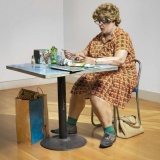

info:
During a unit on Thornton Wilder’s Our Town, middle school English Language Arts teacher Kristen Kullberg began to notice that learners in her grade 8 class struggled to separate their perspectives from that of the author of a text. Although the students consistently made space to hear and consider the diverse perspectives voiced by their classmates, they weren’t yet skilled in considering the perspective of Wilder. When investigating the unit’s overarching question, How and when does a text reveal the beliefs, values, and fears of the writer?, Kristen’s students would inevitably steer the conversation back to their beliefs, values, and fears touched on in the text. When asked about author intent, they often would reiterate their own experience as a reader of the text. This series of lessons was Kristen’s way of addressing this issue and offering the grade 8 learners a chance to dig deeply into authentic and purposeful perspective-taking.

Poetry of Jacques Prévert
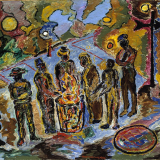

info:
This unit focuses on Jacques Prévert’s Paroles, a diverse collection of French poems written in 1946 that mainly deals with the topics of poverty, social injustice, war and love. The students first focused on identifying and understanding Prévert’s style and his dedication to denouncing the social injustice that led to homelessness. Then, they adopted a more global approach, using art to discover how other artists deal with topics of social injustice and homelessness in order to capture how art can be used as a powerful way to raise awareness. They also studied the musical versions of Prévert’s poems to analyze how these adaptations can be a powerful way to reach a wider public. This led students to create their own poem, supported by a visual.

Exploration of Green River Cliffs
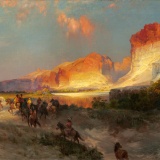

info:
Highly experienced in using artful thinking routines developed at Project Zero, museum educator Heidi Hinish challenged herself, as this project was in its early stages, by layering in a global thinking routine to see if it would raise issues of global significance around a particular work of art. She has since used these ideas as an in-gallery experience at various Project Zero-related education conferences and through the National Gallery of Art’s own teacher education programming.
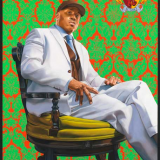

Identity

info:
In this unit, Biology teacher Emily Veres was hoping to find a way to address the complexities of identity–specifically, identity as a sociocultural construct within the confines of a content-heavy International Baccalaureate Diploma Program Biology course. She partnered with National Portrait Gallery educator Briana White to use a museum visit as the cornerstone to this exploration.
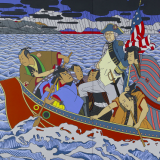

Looking Closely at Portraiture

info:
Portraits enable participants to make interdisciplinary connections among a variety of subject areas. In this series of lessons, museum educator Briana White works with teachers and students to explore the idea that examining contemporary portraits allows us to see ourselves in the artwork and consider how contemporary portraiture can very much be a response to global issues.
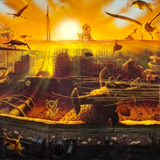

Global Concerns in Art

info:
PreK-grade 8 Art teacher Carmen Jenkins-Frazier was interested in infusing global concerns into her prescribed curriculum for grade 4. Based on the scope-and-sequence provided by the district, in the visual art course the students were to investigate their identity through storytelling. She wanted them to create a triptych, but it wasn’t until a seminar through this project that she developed a plan that satisfied her. The project focused on creating a triptych about a global issue of great concern to each student.
Our hope is that you will find the lessons both useful and inspiring. We do not expect that they can be put into place as is. Rather, skillful teachers will take from them what is most practical for their setting and adapt them. While we name the intended audience and topic being studied, we feel there is great potential for these lessons to be used across many grade levels and subject areas.
Preparing the teachers and museum educators
The seminar series was divided into three phases. In the first phase, together we explored various works of art in the museums through the lens of the Global Competence Framework developed for the Asia Society by Boix Mansilla and Jackson (2011), as well as Global Thinking Routines developed by Boix Mansilla and a team of researchers at Project Zero.
In the second phase, the teachers and museum educators began collaborating to develop lessons that could be used in both classroom and museum settings. They tried out the lessons with students and museum audiences. Before, during and after this try-out period, they brought drafts of these lessons to the seminars for feedback from the group.
In the final phase, project participants put finishing touches on the lessons and prepared them for publication.
Who was involved
The classroom teachers involved in the project were Anne Charny of Sidwell Friends School; Carmen Jenkins-Frazier of School Without Walls at Francis-Stevens (DCPS); Kristen Kullberg of Sacred Heart School (Archdiocese of Washington); Anne Leflot, Afef Merzougui and Emily Veres of Washington International School; Tondra J. Odom of Savoy Elementary School (DCPS); and Susan Silva of Oakton High School (FCPS).
The museum educators participating were Julie Carmean, Heidi Hinish, Sara Mark Lesk, Dena Rapoport and Nathalie Ryan of the National Gallery of Art; Elizabeth Dale-Deines of the Smithsonian American Art Museum; Elizabeth Eder of the Smithsonian Freer | Sackler Galleries; and Briana White of the Smithsonian’s National Portrait Gallery.
Researchers involved were Veronica Boix Mansilla of Project Zero; John Ralls of George Washington University; and Jim Reese of Washington International School.
A number of critical friends–teachers, museum educators and researchers–attended the seminars from time to time and provided valuable feedback.



















